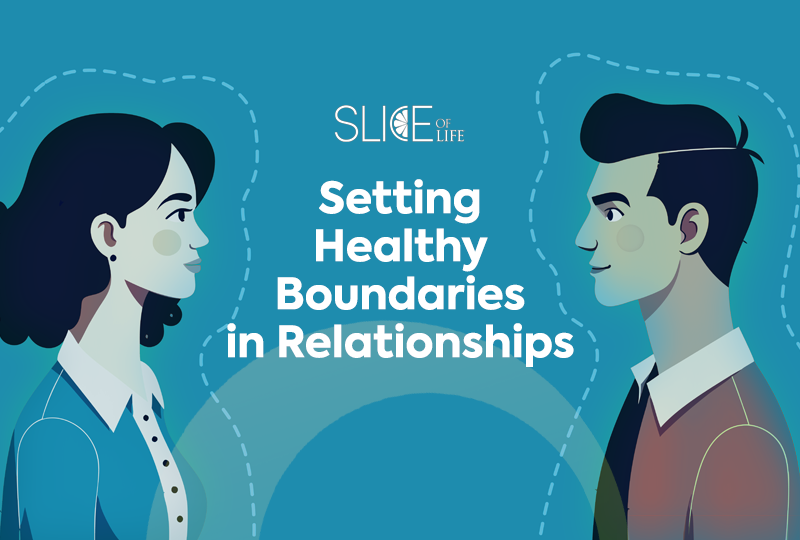Have you ever had a person or multiple people in your life that constantly push up against or blatantly step over personal boundary lines that seem simple and obvious to you? You are not alone in that feeling, and whether the behavior is intentional or not, you deserve to have reasonable boundaries respected.
But what do evenhanded boundaries look like in the real world? PositivePsychology.com’s article, “How to Set Healthy Boundaries & Build Positive Relationships,” acknowledges the individual nature of boundaries as they differ from person to person based on a swirling soup of culture, personality and social context. In relationships, this is characterized as an interpersonal limit to help those around you understand how best to respect your mental and personal space as it relates to personality, culture and a particular time and place.
When communicated and understood correctly, boundaries define the expectations for ourselves and those around us. The New York Times Bestseller “Set Boundaries, Find Peace” by Nedra Glover Tawwab is a recommended resource that will be referenced in this blog.
3 Initial Guidelines for Setting a Boundary
Setting workable boundaries requires a self-inventory and awareness that takes time and effort to cultivate. No one can really know if they are stepping on your toes if they don’t even know they are sticking out of your sandals. Assertive, compassionate communication with clarity is more likely to lead to a desired outcome.
Step 1: Present your boundary in as clear and straightforward a manner as humanly possible. Keep a calm tone in your voice.
Step 2: Focus on stating what you actively seek from the person, more than the behavior that you dislike or do not want. This helps them to know what they need to do, instead of simply what not to do.
Step 3: Acknowledge to yourself any discomfort that comes up from this decision and accept it as part of the process. Guilt, shame or remorse feelings may come up, but that doesn’t necessarily mean that the choice was a bad one. Those new to setting healthy boundaries or who have a strong people pleasing streak are most likely to feel these uncomfortable emotions when drawing a boundary line. Yet, while it is important to consider how your boundaries might affect others and to seek to mitigate issues when possible, ultimately, it is your right to establish autonomy when necessary.
Work boundaries
The Zoom revolution dramatically upended the established office paradigm, allowing the workforce to easily connect with team members from home. Remote work has served as a blessing and a lifeline for many seeking flexible work situations, yet it blurs the line between home and work to a degree that boundary setting is a must. For situations such as these, or for other common work conflicts, here are some good tips.
- Take time to define your personal boundaries based on your values and priorities. Communicate clearly about your boundaries, so people don’t have much excuse for crossing them and creating tension.
- It’s critical to maintain an upfront but professional tone. Try not to discuss your colleagues with one another, as that often just devolves into gossip. Let your team and those you work for know your availability and reasonable expectations regarding responses to email, text or phone calls outside of work hours.
- Develop a structure and rhythm to your work when possible. If there are known times for focused work in which colleagues know not to disturb you, that makes for a simpler situation.
- It’s natural when working beside people for a long time to want to grow close to them and develop deep friendships. Be very careful about becoming good friends with colleagues, as it can make for confused boundaries and problems in the future.
- Don’t be afraid to delegate or to say no when it makes sense to do so.
- Be sure to use your time off, in an approved and appropriate manner. This helps create balance that will lead to a more productive and balance life in all sectors.
- Technology can be a helpful way to set and track work tasks, which in turns helps with maintaining boundaries. Project management tools such as Trello and Asana help keep everyone informed and on task regarding who is in charge of what.
Healthy Boundaries in Other Relationship Types
The ability to set and maintain healthy boundaries in a compassionate but firm manner is a skill that will help you in all relationship types. Whether it’s with family members, friends or a romantic partner, boundaries will help to shape meaningful and safe relationships. There are seven common boundary types to keep in mind to create healthy relationships, all based on what makes for a balanced give and take.
There is mental boundary, regarding the freedom to have personal thoughts, feelings and values that may differ from others. Then there is emotional boundary, your emotional bandwidth you have to expend on others. Physical boundaries set standards for bodily autonomy and personal space. Material and time boundaries refer straightforwardly to how much money and time can be allocated to a relationship. Internal boundary refers self-regulation in terms of how much energy is used for others versus the self, sometimes referred to as the social quotient. Lastly, a conversational boundary defines topics of discussion that a person does or does not feel comfortable taking part in. Understanding these boundary types is a good way to begin to think about what your personal needs are and how to get them met.
We at Life University are all about healthy psychology and building people up. To learn more about making a career in positive psychology, check out our M.S. in Positive Psychology program.


Social Media